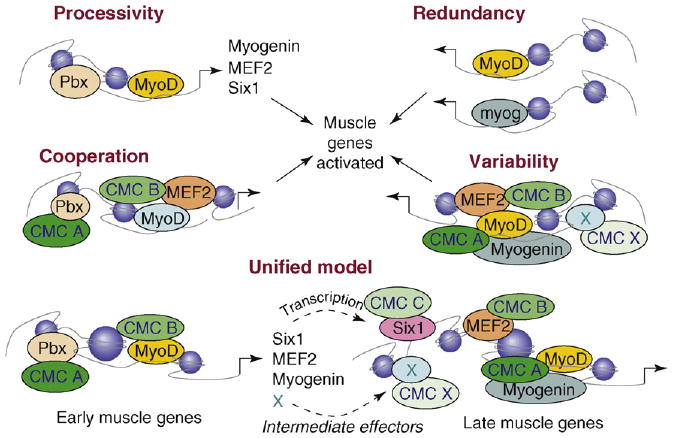Figure 3.

Mechanisms of activation of muscle-gene transcription. Muscle-gene transcription can be activated by different mechanisms. Cross-activation between muscle bHLH proteins, such as MyoD and myogenin, is an example of processivity by which myoblasts expand the number of master regulators of differentiation. They can, in turn, activate the same target genes because of their structural and functional redundancy or synergize to activate late genes in a model of cooperation that might also require other direct targets of MyoD, such as MEF2 and Six1. Genome-wide studies indicate that different subsets of genes are expressed according to a temporal regulation owing to the intervention of additional factors that are often induced by muscle regulatory factors at earlier stages. Although the identity of these factors remains to be established (indicated by X), they can provide the variability that permits the activation of promoters containing similar motifs (Ebox and MEF2) at different times. A key element in the cooperation model is provided by the recruitment of different CMCs, possibly with complementary enzymatic activities. In this regard, the recruitment of additional transcription factors in the vicinity of Ebox and MEFs sites offers an obvious advantage. These different models of transcriptional activation are not mutually exclusive and can all fit into one unified general model that enables coordination of the temporal pattern of gene expression.
